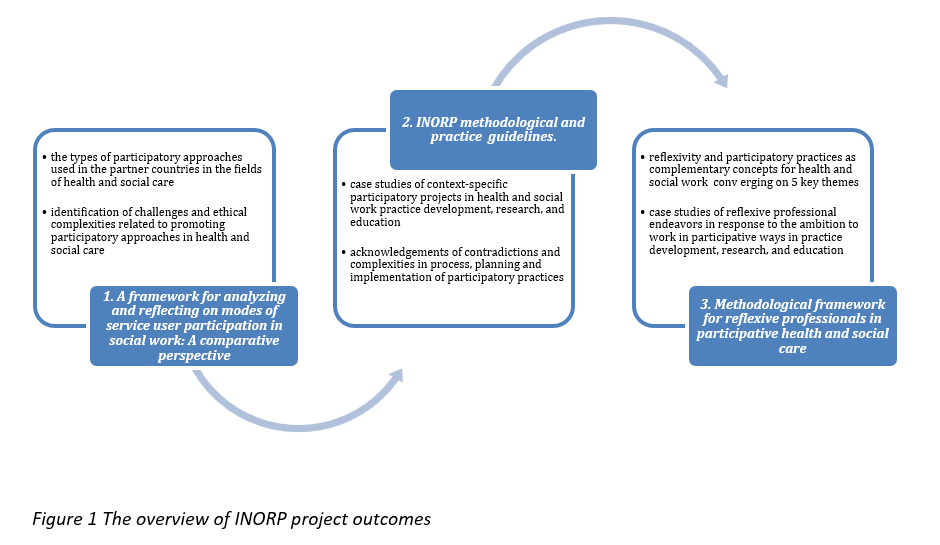Reflexivity and participation in communities

3. What's Inside This Practice Guide (PG)?
This PG presents the key ideas and principles that emerged from the intercultural dialogue among project partners. These ideas are aimed at helping teachers, students, service users, and service providers apply participation and reflexivity in their collaboration towards common goals.
Throughout the INORP project, we collected knowledge and examples of practices that value participation in education, research, and practice development from several European countries. The Practice Guide builds on three outputs of the INORP project and outlines the opportunities and pitfalls of participatory approaches.
The PG is an important resource for those seeking to engage in collaborative partnerships that foster participation and reflexivity. It offers practical insights and guidance to help educators, researchers, and practitioners create effective and sustainable participative projects that meet the needs of service users and promote social justice. We hope that this guide will inspire you to explore participatory approaches in your own work and contribute to a more democratic and inclusive society.

Figure 1 presents an overview of the INORP project outcomes. The full version of the materials of all these phases is available in English on each partner's website (see here). This Practice guide is available at the link to MOOC (Charles University) in English, Czech and Portuguese. Some parts of the materials are delivered as hypertexts of this Practice Guide, mostly in English.
| Output 1 | A framework for analysing and reflecting on modes of service user participation in social work: A comparative perspective |
| Output 2 | INORP methodological and practice guidelines |
| Output 3 | Methodological framework for reflexive professionals in participative health and social care |
The INORP project material was designed to be accessible not only to academics but also to service users and practitioners. To help us organize the complex issues and materials produced during the project, we summarised our learning in a graphic scheme called the Reflective Participative Partnership (RPP) (see Figure 3). We then used RPP to explain the application of participatory practice in three concrete examples: one from a practice context, one from an educational context, and one from participative research practice.
The RPP format is further accompanied by guiding questions, which can be used as an exercise in various learning contexts, such as a classroom, a walking seminar, or a community group discussion. By following these guiding questions, individuals can create their own participative projects and use the RPP scheme to help guide their practice.
We believe that this material can be further modified, translated, and enriched to make it more accessible to a wider audience in various contexts. We encourage you to adapt the material to your specific language and audience and use it to promote participatory practice in your own community.
Through discussions with students, public service organizations, service user organizations, and social work educators from Belgium, the Czech Republic, Finland, Ireland, and Portugal, we learned that there are significant differences in traditions and developments regarding user involvement and citizen participation across these countries. These differences should be reflected in each social work initiative. To facilitate this consideration, we suggest that teachers and students of social work engage in reflection and analysis by addressing the following three questions before beginning any exercise on participation and reflexivity:
- What is the role of social workers in promoting user involvement/participation in your country?
- How does this relationship reflect the connection between social work, practice, and research in your country?
- Who is involved in facilitating/promoting user participation in your country?
After discussing these questions, we encourage you to explore the result of the comparison of the five partner countries by following this Link to O1
